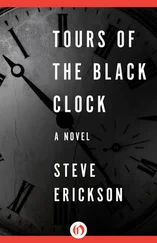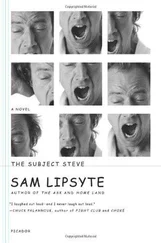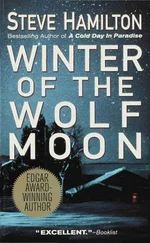As you’d expect, I was also pretty groggy when I woke up and I remember wondering why the fuck there was a red Christmas tree bulb hanging out of my pelvis and one hanging out of my neck too. As I came a bit more to my senses I realized they were blood drains – little suction pumps that suck out any surplus blood so it doesn’t start congealing. My neck and throat felt OK but that bloody hip was unbelievable and when Ian wanted me on my feet the morning after the operation I was horrified. Man that hurt.
Anyway, normally that procedure would have been enough and any other patient would be told to take it easy for a while until the bone healed itself. But because my surgeon knew I wanted to go racing again as soon as possible, he strengthened my neck by screwing in a titanium plate which I still have in there – and always will have as a matter of fact.
A CT scan showed the operation had gone well and my neck was stable and I was on my way home two days later, but I’d been told there was no guarantee that I’d ever get any feeling or strength back in my left arm. Ian said it might return in six weeks, six months, one year or perhaps never at all. I had almost torn that nerve clean out of the spinal column as my body was twisted in the crash and no one could tell if my arm would ever be anything more than the relatively lifeless object that was dangling by my side. I was at nature’s mercy.
Every day for weeks – even though I don’t believe in God – I prayed for some feeling to come back, but every day for weeks it didn’t. I tried to build up strength in it but could only lift light weights and I was starting to get really depressed thinking my career was over and that I was going to be left with a useless arm. I couldn’t even try to set up a deal for the following season because I didn’t know if I’d be able to ride a bike or not.
Then one day, about two months after the crash, it started happening. I felt a slight sensation on the back of my hand and then in my index finger. It wasn’t much but it was definitely something. I thought, ‘Yes! Here we go, I’m back in business.’ I felt totally elated but not as elated as I was when, near Christmas time, I was finally able to lock my left arm out fully. That was the best Christmas present I’d had since my first son was born on Christmas Day in 1997. I was over the moon.
It was game on after that and I started training slowly and gently to rebuild some muscle in my wasted arm. That was day number one of life number two as far as I was concerned and I never stopped thinking about racing after that. There were still some months until the start of the new season so I had time to try and organize a ride for the year, even though I’d burned my bridges with most teams over the last few years. But I didn’t care – I’d been given a second chance at life and I wasn’t about to waste it. Somehow I would find a bike to race even if it meant remortgaging my house and buying one myself. The way I saw it, I had nothing to lose because I should have been dead anyway.
Steve Hislop was back – and he was going to win the British Superbike championship come hell or high water.
2 Shooting Crows
‘My real name’s actually Robert Hislop but my dad made a mistake when he registered me.’
The Isle of Man TT is a totally unique event and probably attracts more controversy than any other sporting fixture on the calendar.
It’s held on the world famous ‘Mountain’ circuit that runs over 37.74 miles of everyday public roads on the Isle of Man. The roads are, naturally, closed for the races but they’re still lined with hazards such as houses, walls, lamp-posts, hedges and everything else you would expect to find on normal country roads.
Because of the dangers and the number of competitors who have been killed there, the event lost its world championship status in 1976 when top riders like Barry Sheene, Phil Read and Giacomo Agostini refused to race there any longer. When you consider that the current, fastest average lap speed is held by David Jefferies at 127.29mph and bikes have been speed-trapped at 194mph between brick walls, it’s easy to understand the dangers of the place, as there’s no run-off space when things go wrong. But the thrill of riding there is unique and that’s what keeps so many riders coming back year after year.
Riders don’t all start together at the TT – they set off singly at 10-second intervals in a bid to improve safety although mass starts have occurred in the past. That means the competitors are racing against the clock and the longest races last for six laps which equates to 226 miles and about two hours in the saddle at very high speeds and on very bumpy roads. It’s an endurance test as much as anything else and you can’t afford to lose concentration for a split second or you are quite literally taking your own life in your hands. It is an event like no other on earth.
The TT (which stands for Tourist Trophy) fortnight is traditionally held in the last week of May and the first week of June and the Manx Grand Prix is traditionally held on the same course in September. The latter event is purely amateur with no prize money and it exists as a way for riders to learn the daunting 37.74 mile course before tackling the TT proper. The name should not be confused with the world championship Moto Grand Prix series because the two have nothing in common.
Both the Manx Grand Prix and the TT races have played a huge part in my life, which is why I’m describing them in detail now. Without them I simply wouldn’t be where I am today, or even writing this book, and a basic understanding of the nature of both events is crucial to understanding my later career.
I first visited the Manx GP as a child, then later on spent 10 years racing on the Mountain course, both at the Manx and the TT. I grew to love the Isle of Man so much over the years that I moved there in 1991 and it’s where I still live to this day.
It was my father Alexander, or ‘Sandy’ as he was known, who got me interested in the TT and the Manx GP in the first place as he raced at the Manx back in the 1950s. I went on to have incredible success at the TT and that’s really where I made my name in the world of motorcycling. But believe it or not, the Steve Hislop who won 11 TT races (only two men in history have won more) isn’t actually called Steve at all thanks to one of the daftest blunders anyone’s dad ever made.
I may be known as Steve Hislop throughout the bike-racing world but on every piece of documentation that proves who I am, the name given is actually Robert. I still don’t know exactly how it happened but it was definitely my dad’s doing. Both he and my mum, Margaret, had decided on calling me Steven Robert Hislop and that’s the name I was christened under, but my dad messed up big time. For reasons known only to him, he registered me as Robert Steven Hislop and to this day even my passport carries that name.
Robert was my grandfather’s name, but he died when he was just 30 after he fell from the attic in his dad’s blacksmith’s workshop. His was the first in a series of tragic early deaths in my family.
I was born at 7.55pm on 11 January 1962 at the Haig Maternity Hospital in Hawick in the Scottish Borders. But although I was born in a Hawick hospital, I’m not actually from the town itself despite what all those race programmes, TV commentators and magazine articles have said over the years. I’m actually from the little village of Chesters in a parish called Southdean, a few miles south east of Hawick. My mum was only 16 when she had me, while my dad was a good bit older at 26 – a bit of a cradle snatcher was the old boy!
Money was tight so we all lived with my widowed granny for the first few months of my life. Mum worked in the knitwear mills; knitwear is a big trade in the Borders and my dad was a joiner who worked for a small country joinery firm in Chesters village before eventually buying the business when the owner died.
Читать дальше












